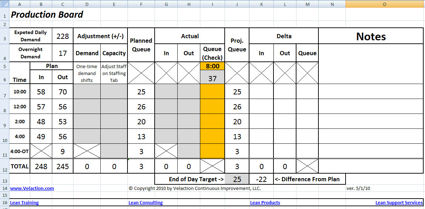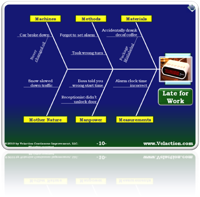Daily Management Worksheet
The Daily Management Worksheet is a tool to help you update your production board. It has tabs for planning your demand and staffing. This information is automatically added to the production board worksheet to help you manage your day. The production board is the cornerstone of daily management. It is a very visual indicator of a team’s progress, and makes sure that everyone has the same understanding of the current condition of the team. Note Read more…

